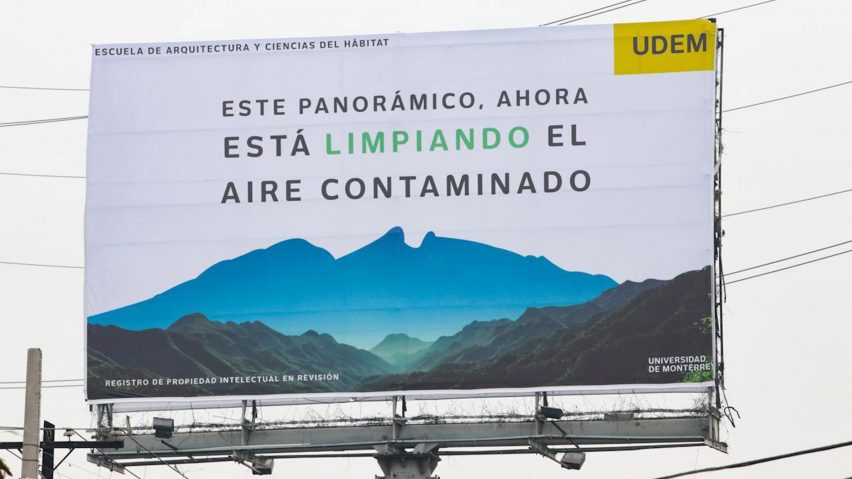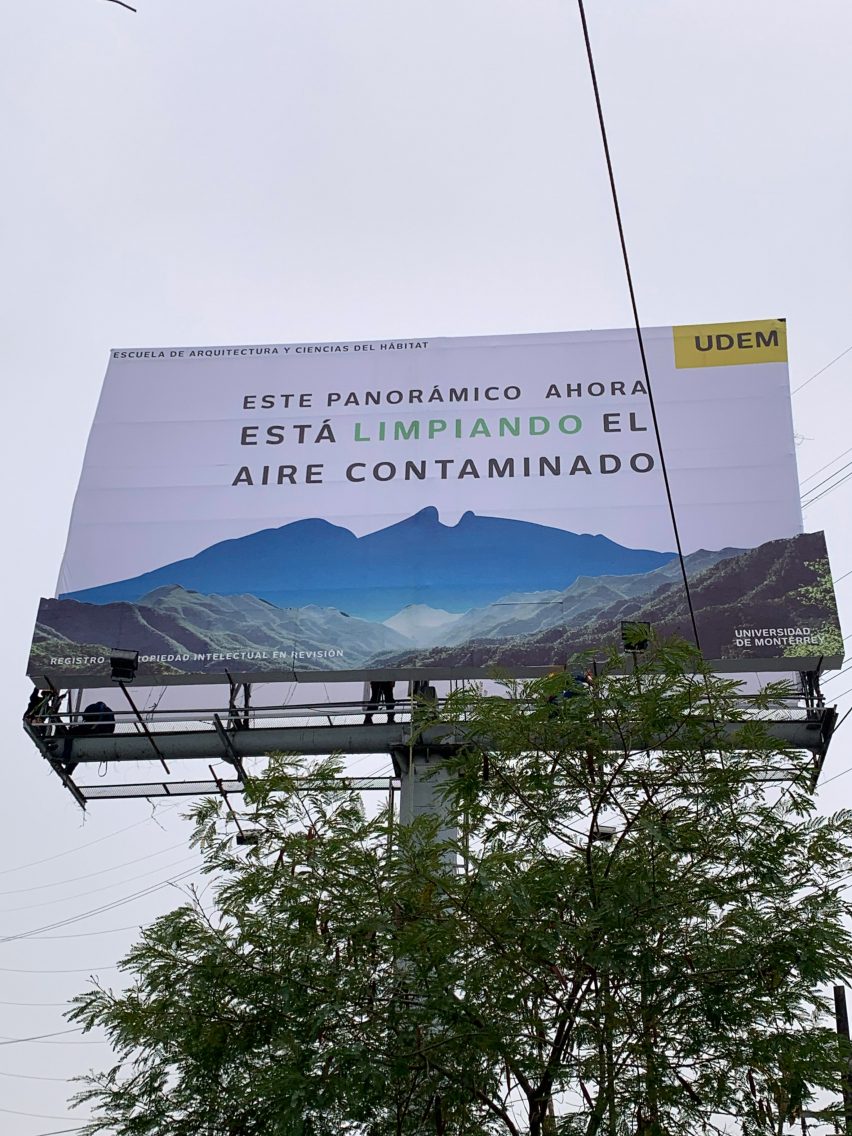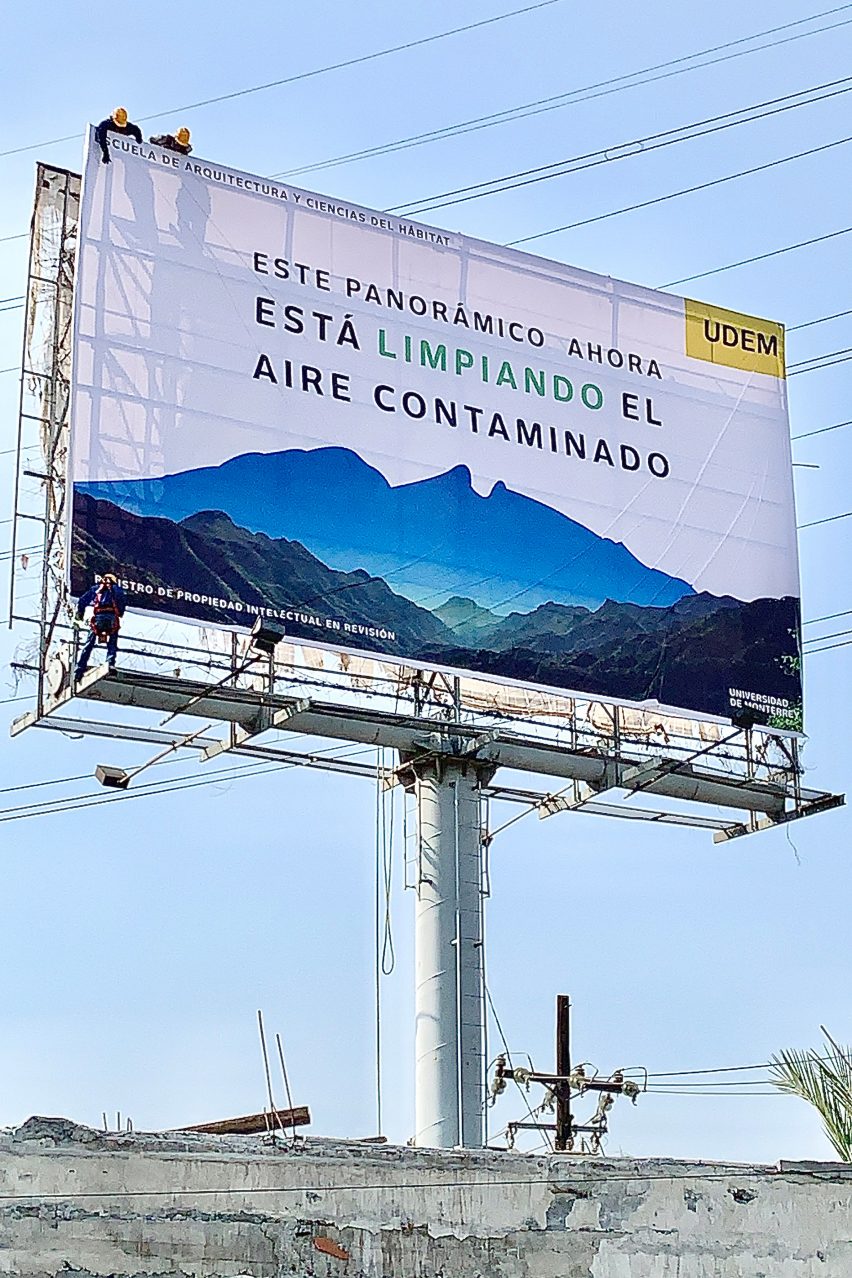
Daan Roosegaarde and design students create a "smog-eating billboard" in Mexico
Dutch designer Daan Roosegaarde has covered advertising billboards in Monterrey, Mexico in an air-purifying resin that can eat up the city's smog.
The billboard advertisements are coated with a special resin that, when hit by sunlight, prompts a photocatalytic process to turn smog into clean air.
"This project proposes to take advantage of existing city panoramic structures to clean up polluting particles through an intelligent coating process that involves sunlight and wind," Studio Roosegaarde told Dezeen.
"It offers an additional alternative solution to mitigate air pollution and generate a real impact."

The photocatalytic process is similar to photosynthesis in which plants convert carbon dioxide and water into food. Furniture brand IKEA also used a photocatalyst mineral in its air-purifying Gunrid curtain.
In Roosegaarde's project, a material called Pollu-Mesh is activated by natural light and used to separate oxygen from carbon dioxide.
"The smog-eating billboard uses a nanotechnology coating that is activated with sunlight, making a photocatalysis process in which, when in contact with the contaminating particles, it neutralises them, releasing oxygen," the studio added.
Pollu-Mesh is Roosegaarde's latest effort to tackle pollution in cities, following on from a series of smog-eating towers installed in Rotterdam and Beijing.
Monterrey is very susceptible to smog – it has limited space for trees and is situated in a valley surrounded by mountains, all of which are circumstances known to trap pollution.
He created the material as visiting professor on the University of Monterrey's (UDEM) new environmental design course, with a group that included industrial design students Frida Fernanda Leal and Karen Tellez, architecture student Ana Cecilia Álvarez and sustainable innovation and energy engineer Ana María Peñúñuri.
Pollu-Mesh boards are installed in strategic locations in the city, where there is high vehicular flow and therefore a greater concentration of pollution.
Each roadside advertisement measures 12.7 by 7.2 metres and provides the same amount of oxygen that 30 trees can provide over a six-hour period, according to the studio.
Monterrey has 9,760 billboards, which could together do the work of 292,800 trees in six hours. One billboard can function for up to five years, according to the team.

A graphic on each advertisement shows an image of a local mountain and is accompanied by text that translates to "This panoramic is now cleaning the air."
Daan Roosegaarde founded Studio Roosegaarde in 2007. In addition to its smog-eating towers, the studio has designed other products and installations that focus on the environment.
These include a light show that illustrates the location of floating space junk and an interactive exhibition designed to show visitors their environmental impact.